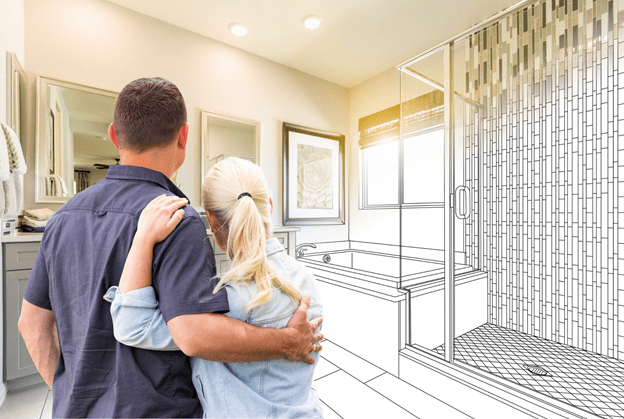Apart from lending money for property purchases, most Indian banks also offer loans to help you improve your house. Such loans can be used for renovations, extensions, etc. Products like these have different names – home improvement loans, home renovation loans, home expansion loans, etc. home improvement loans can be used to carry out any improvement or renovation on your house, such as adding rooms or floors, painting, performing external or internal reconstruction, remodeling, etc. Low-interest rates, low fees, and flexible loan amounts are the home improvement loans’ best features. Additionally, these loans should provide a fast approval process, reasonable repayment terms, and an easy application process.
It is also possible to apply for a personal loan or a home improvement loan. Individuals working in reputed organizations can take an instant personal loan for salaried persons by using the personal loans app of financial institutions for home improvement loans.
Need for Home Improvement Loans
Home improvement loans are unique because they can be used for various purposes. For instance, in the case of a home loan, land loan, or reverse mortgage, there are specific guidelines regarding using the funds. However, home improvement loans can be used for various expenses, including home renovation and furnishing your new home. Home Improvement Loan can be used for various purposes such as
- Renovation of the entire property
- Improvement
- Maintenance
- Exterior and interior painting
- Roofing and waterproofing
- Flooring and tiling
- Electrical work and plumbing
- False ceilings and woodwork
Home Improvement Loans eligibility
Any property owner who wants to renovate his property can apply for a home improvement loan. Banks scrutinize your application based on several factors, including:
- You must be at least 21 years old to apply for this loan. The upper age limit is set at the applicant’s retirement age. This indicates that the loan must be paid off when the applicant reaches the age of 60. The age limit could be raised to 65 years old for self-employed candidates.
- The larger the loan, the higher the revenue. These loans are available to both salaried and self-employed individuals.
- The better your credit score, the lower your interest rate. If the property is co-owned by more than one person, each co-owner must be listed on the loan application. It is important to note that a co-borrower does not have to be a co-owner.
Documents required for a home improvement loans
- Identity Proof – Aadhar Card, Voter ID card, or Driving License
- Residence Proof – Utility Bills or Passport
- Income Proof – Proof of IT returns, PAN Card, Salary Slip, Total Turnover, Bank account statement
- Property Documents – Home Loan documents, Sale deed, etc
Home improvement loans tenure
The loan tenure could range from one to thirty years, depending on your age and the bank where you obtain the home improvement loan. Your age mostly determines the loan tenure at the time of application. The loan term could be extended up to 20 years if the borrower is young.
Home improvement loans Tax benefits
A borrower can deduct up to Rs 2 lakh from the home loan interest paid in a year under Section 24 (b) of the Income Tax Act. Within that limit, this borrower is also entitled to a deduction of Rs 30,000 from taxable income for interest paid on home renovation loans in a given financial year. Even if you have missed the actual payment, you can claim a deduction for the payment’s interest portion. This deduction, however, is only applicable for a self-occupied home. The borrower will not claim the benefit of the loan is used to make modifications to a rental property. Furthermore, under Section 80C of the tax code, no deduction can be claimed on the principal repayment of this loan.
Final Thoughts
Home renovations can be pricey, but you can make your ideal home a reality with a home improvement loan. With the help of home improvement loans, you may turn your home into a modern living environment for you and your family. You can use the money from this loan to not only repair and renovate your home but also to buy new furniture, fixtures, and furnishings, such as sofas and electronics. After considering all of the numerous possibilities for home improvement loans, it’s possible to conclude that a home improvement loan from your current lender is the best option in terms of tenure, rate of interest, and income tax benefits. However, if you cannot obtain this loan, you should consider other options.

